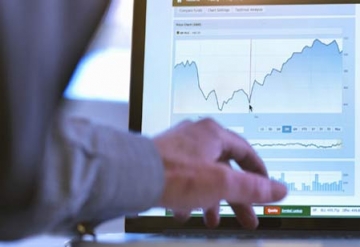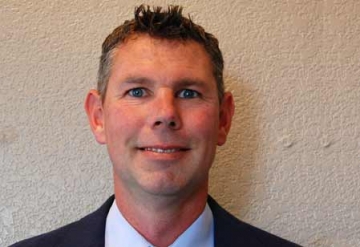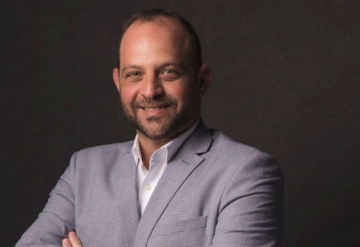THANK YOU FOR SUBSCRIBING

Balancing Design And Business In Construction Management
Esi-Kilanga Bowser-Santiago, Senior Project Manager, Turner Construction Company

 Esi-Kilanga Bowser-Santiago, Senior Project Manager, Turner Construction Company
Esi-Kilanga Bowser-Santiago, Senior Project Manager, Turner Construction CompanyEsi-Kilanga is a seasoned professional in architecture and construction management, currently serving as a Senior Project Manager at Turner Construction Company. She brings a wealth of experience, working in diverse positions, spanning architectural design to overseeing large-scale construction projects. Esi-Kilanga is committed to creating spaces that are not only functional but also uplifting and inspiring for their inhabitants. She believes in the value of collaboration and the melding of diverse minds to create innovative solutions. Above all, she is committed to creating functional, aesthetically pleasing spaces that exceed client expectations and positively impact the community.
In an interview with Construction Tech Review, Esi-Kilanga emphasizes the importance of embracing future technologies and tools in construction management.
Could you briefly describe your educational background?
I started my career in design after graduating from architecture school at the University of Miami. I spent my initial three years working in South Florida, focusing on residential and small healthcare projects. Later, I pursued a Master’s degree in architecture and urban design at Columbia University’s Graduate School of Architecture. After completing my education, I joined a mid-sized firm in New York, working on institutional design projects like master planning, educational facilities, and community centers.
Can you provide an overview of the projects you worked on?
One of my notable projects there was the Memorial Sloan Kettering Zuckerman Cancer Center, where I gained valuable insights into the construction process, especially the closeout phase and the importance of documentation for effective space operation. I started on a healthcare project with Turner during the final phase of the Memorial Sloan Kettering Zuckerman Cancer Center project, and experiencing the closeout process was enlightening, as it’s something typically unseen on the design side.
The process starts with providing a comprehensive package at the end of construction and teaching the client how to optimize their newly acquired space. From there, I moved to the renovation of the New York Cruise Terminal at Piers 88 and 90. This project involved extending Pier 88 to accommodate larger ships and building logistics infrastructure, which included adding roadways for truck access and installing a conveyor system for luggage handling. It was fascinating to see how technology and innovation drove construction needs, such as upgrading piers to handle new fleets of cruise ships.
Something I learned early on is that Turner Construction stands out in our industry for having a rigorous internal budget audit process and project analysts who review and monitor project budgets and contracts monthly to ensure financial stability, contract compliance, and smooth project progress. These professionals work with the finance team to understand the project’s business aspects. Transitioning from the role of creating the built environment to the business side was fascinating.
Over the years, I learned how to create project budgets and utilize best practices and assisted in the fact-gathering analyst process that helped the company decide which projects to bid on or decline. This experience gave me a valuable understanding of the business of construction. After that, I returned to the field, working on the NYU Energy Building, which was part of a major redevelopment along the FDR.
After finishing the NYU Energy Building project, I transitioned to the courtyard renovation at Brookfield Place on Vesey Street. This complex project involved a major interior renovation of public and retail spaces while keeping the busy transit hub operational. We maintained egress paths and extended walkways, replaced escalators and elevators, installed a new curtain wall, and ensured public safety throughout. One innovative feature was using chutes for public access between the waterfront and transit stations. The transformation from a dark, marble-heavy area to a bright, airy space with steel, glass, and natural light makes this one of my favorite projects.
The experience gained from various projects, and a deeper understanding of our business are invaluable. I was then offered the position of Director of Centralized Engineering for our New York office. The centralized engineering group was established to coordinate projects on paper before fieldwork, ensuring cost- effectiveness. Initially, we had three engineers, but over five years, the team grew to manage numerous projects at a time. By operating at a departmental level, we avoided gaps that a single engineer might face. This improved our quality control and allowed for standardization across projects.
One of my main goals was to establish a system that allowed us to allocate resources effectively, ensuring our work was high-quality and profitable. When I left the department, we had achieved this flawlessly, providing robust engineering support while remaining highly profitable.
Most recently, I worked on the Google fit-out project at St. John’s Terminal. As a Senior project manager, I was involved from the design phase through construction. I managed a team of engineers, coordinated various work streams, and ensured high-quality outcomes across all aspects of the project. The use of VDC tools and a strong focus on quality control were key to delivering a successful result. Overall, my career has been driven by a commitment to improving processes, embracing innovation, and ensuring quality in every aspect of my work.
How do you envision the future of the construction management space?
A key aspect of the Google St. John’s Terminal project was leveraging our Virtual Design Team (VDC). Turner built the core and shell while we conducted point cloud scans as floors were handed to the Interiors team. Over the past four years, AI integration has become increasingly essential to our processes. Modular construction is another growing trend. In this project, we worked with Google’s R&D team and DIRTT to create modular office pods, flexible spaces that can be reconfigured over a weekend to adapt to changing team needs.
The design prioritized open workspaces and common areas, which are well-utilized. We extensively used visual planning, incorporating renderings for problem-solving, accuracy, and goal setting. Regular comparisons between these visuals and the actual space ensured a final product closely aligned with the original vision. Trends like AI integration, modular construction, flexible workspaces, and visual planning are shaping the future of construction management and improving project outcomes.
What advice and guidance would you provide to your peers and aspiring professionals in construction management?
My advice is to embrace emerging tools and technologies in construction. While core processes have remained largely unchanged for decades, advancements in planning and execution can greatly enhance outcomes. Prefabrication techniques and just-in-time deliveries streamline workflows and minimize delays. Incorporating new materials and technologies boosts efficiency. Additionally, ensure your installation staff is trained in these methods. Staying adaptable and informed will drive innovation and advance the industry.
Read Also
Development of the Logistics Warehousing Market in Brazil
Driving Innovation and Preserving Tradition
Operational Leadership VS Field Leadership in the Utility Construction Business
People-First Innovation: Developing Virtual Design and Construction (VDC) Training Programs to Empower Field Team Members
Sustainable Projects: Aligning Business and Purpose in Latin America
Engage Smarter: Why Constraints Matter More Than Hazards

 Copyright © 2025 All Rights Reserved | by:
Copyright © 2025 All Rights Reserved | by: Construction Tech Review
| Subscribe | About us | Sitemap| Editorial Policy| Feedback Policy














